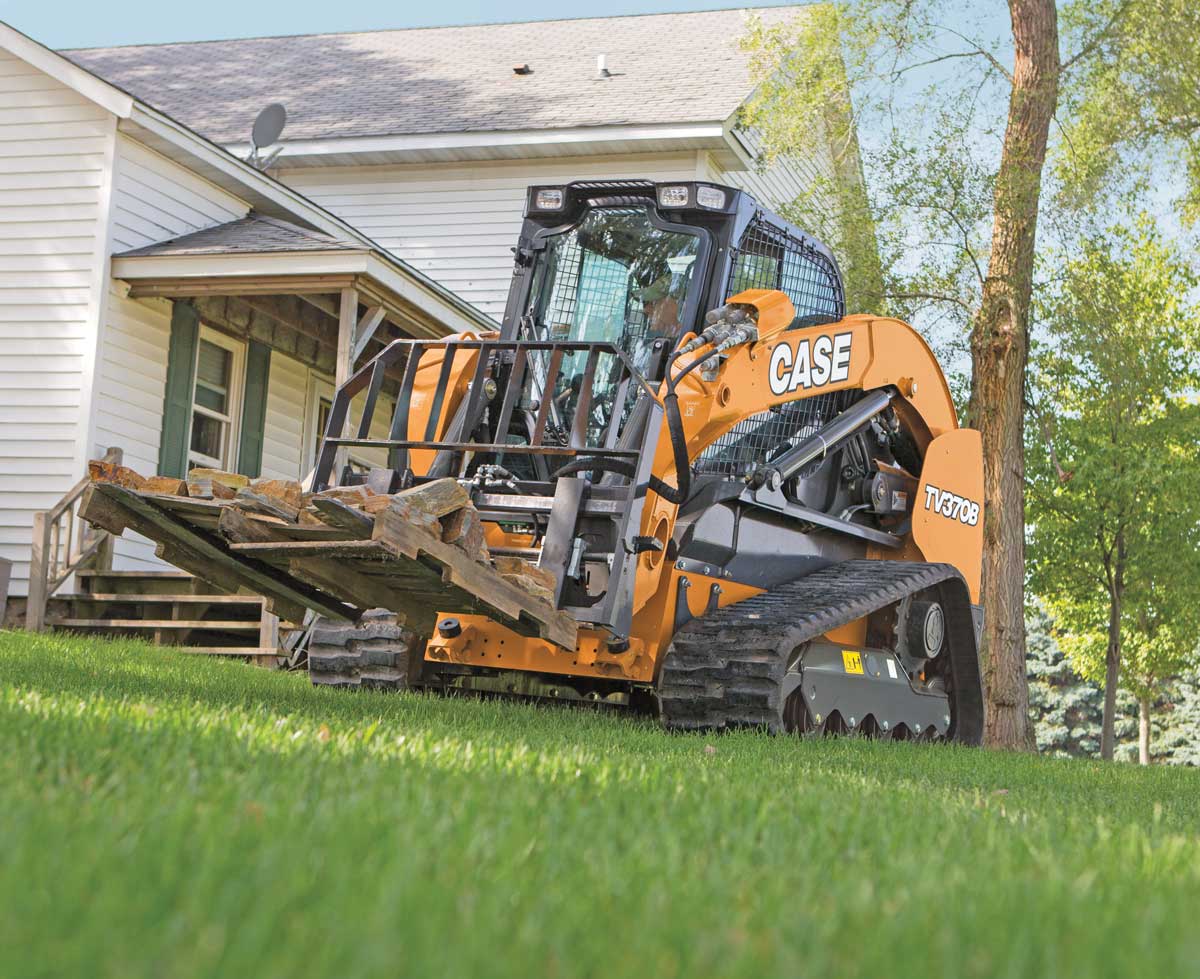Proper Track Loader Undercarriage Maintenance = Lower Operating Costs
By Brad Stemper
For compact track loaders, a significant portion of the equipment’s purchase price and the majority of maintenance costs over the life of the machine is attributed to the undercarriage. This makes proper maintenance so important. There are a variety of ways to prevent and minimize undercarriage wear, maximize undercarriage life and lower owning and operating costs.
Proper Operating Techniques
The undercarriage of a crawler machine works as a system of moving components that consists of sprockets, rollers, idlers, tracks and other miscellaneous parts. Proper operation is critical to controlling the cost of these wear items. Operating procedures, however, start before the machine even gets to the jobsite. Before bringing the machine to the jobsite, examine the ground conditions and the terrain. Map out the routes to minimize travel, cutting down on wear. Assess the need to control ground pressure and the amount of debris the machine will need to navigate. Choose the narrowest shoe width possible to meet the required flotation, and review operating techniques with machine operators.
Once working on the jobsite, make every effort to take the widest turns possible. Counter-rotation — or pivot turns — causes accelerated wear and increases the potential for de-tracking of rubber-tracked machines. Make wider, more gradual turns — such as Y-turns — whenever possible. Also, be sure to alternate the turning direction. Continuously turning on the same side can cause asymmetrical, accelerated wear — so make every effort to balance the direction of turns throughout the day. If that’s not possible, check for wear more often.
Constant operation on a slope or hill in one direction can accelerate wear to idlers, rollers and guide lugs by placing greater force on one side. Travel straight up or down the slope and make turns on level ground. Obviously, some jobs require hillside work, but minimizing time on the slope will always pay off in reduced wear and load to the undercarriage. Higher speeds can cause more wear, as can unnecessary travel in reverse. Limit unproductive high speeds and avoid excessive travel in reverse.
Extra Care for Rubber Tracks
If rubber tracks are used, it’s important to avoid harsh environments — rubber tracks work best on soft ground. Traveling or operating on abrasive materials will shorten track life. Avoid surfaces that include broken stone, jagged rocks, demolition rubble, rough asphalt, concrete, scrap iron and other recycled materials. These and similar conditions can damage tracks and cause them to de-track when stones get stuck in the idler or sprockets.
With rubber tracks, it’s best to stick to relatively flat surfaces. Operating the machine with the outside or inside edge of the track turned up can cause damage to the edges and lugs of the rubber track. Because rubber is weaker than steel, avoid contact with curbs or walls by using ramps to minimize damage and downtime. Rubber tracks are not direction-specific, so it’s important to rotate the tracks. Pull the tracks and switch sides or flip their direction on each side when wear patterns present themselves.
It’s also important to clean the tracks on a regular basis. At the end of the day, clean out mud and debris from the undercarriage, reducing component wear. Doing so at the end of the day ensures that material that might freeze or dry up and harden overnight is removed. Pay special attention to cleanup when rubber tracks are used given that buildup can cause the tracks to stretch.
Routine Maintenance Pays Off
Proper care of the undercarriage can significantly minimize maintenance costs, increase uptime and profoundly impact the longevity of the crawler machine. It’s important to conduct daily inspections. Look for excessive or uneven wear, as well as damaged or missing components. Any issues should be immediately addressed to minimize further wear or damage. Adhere to routine maintenance guidelines, including oil changes for final drives and checks on undercarriage bolt torques.
Monitor track tension when the machine is in actual working conditions and adjust it accordingly. When steel tracks are too tight, it accelerates bushing wear. When they’re too loose it can create instability and potentially cause the tracks to derail. When rubber tracks are too tight, it can cause the tracks to stretch or break in addition to excessive roller and idler wear. A rubber track that is too loose can de-track, leading to a damaged track and significant downtime. Proper tension of steel or rubber tracks also ensures the machine maximizes its use of available power. Check the operator’s manual for specific track inspection and tensioning procedures.
It is immensely important to keep up with routine maintenance because damaged tracks cannot be repaired. And once tracks are damaged, they need to be replaced right away to minimize excessive wear to other undercarriage components.
Don’t Overlook the Undercarriage
Proper operation of compact track loaders — along with proper undercarriage care and maintenance — is an essential part of fleet management. Contractors who give it the attention it deserves will come out ahead — with machines delivering optimal performance at lower overall owning and operating costs.
Brad Stemper is the solutions marketing manager for Case Construction Equipment, based in Racine, Wis.




